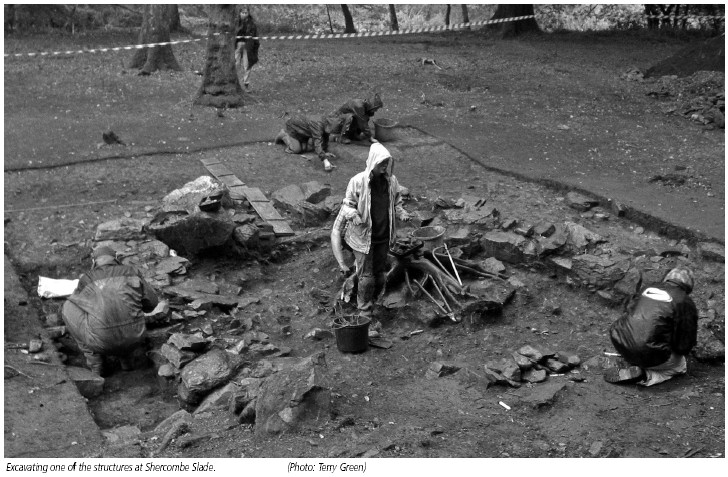Promoting awareness of the archaeology and history of North Devon

Copyright © 2015 North Devon Archaeological Society
The Exmoor Iron Project
(Newsletter No 10 2005) See also Sherracombe Ford article.

The Exmoor Iron Project, known as ExFe and led by Dr Gill Juleff of Exeter University,
is drawing to a close, after having examined Romano-
The site is about a kilometre up the Barle Valley from Marsh Bridge to the north of Dulverton. Some years ago Gill Juleff showed the site to a group of NDAS members when we still had a programme of summer visits.We were shown low mounds under the trees beside the river and fragments of iron slag. At a point where there was a fairly wide flood plain, there were slight earthworks, suggesting buildings. This is where the ExFe team has excavated this year.
Before excavation three heaps of slag were clearly visible as well as the earthworks
suggesting buildings. At least two buildings were initially identified. The excavation
revealed earthbonded rubblestone masonry representing three structures. Two of these
were three-
Unlike the nearby Blacklake Wood site, which has now been radiocarbon dated to the later Roman period, this site appears therefore to be medieval. On the face of it, the scale of operation was quite small, though there are other sites along the Barle which, taken together, may add up to a moderately extensive industry.